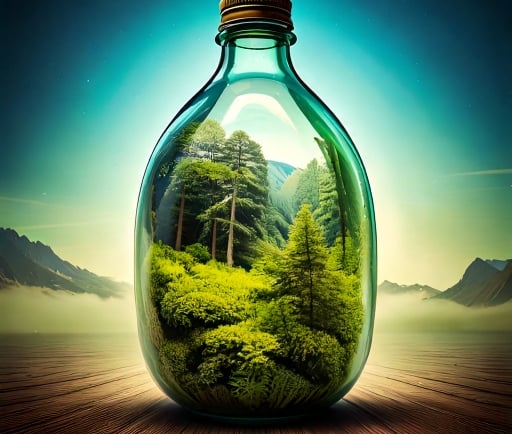The Self-Sustaining Ecosystem in a Glass Bottle


Introduction to a Remarkable Environmental Experiment
In the realm of ecological studies and sustainability projects, few experiments capture the imagination quite like a self-sustaining ecosystem contained within a glass bottle. This miniature environment not only serves as a model for understanding ecological relationships but also presents a compelling story of endurance as it survived for nearly half a century with minimal intervention. Watered just once in 1972, this remarkable system inspired curiosity and awe among biologists and environmentalists alike.
The Components of a Self-Sustaining Ecosystem
A self-sustaining ecosystem relies on the symbiotic relationships between its various components. In this glass bottle, you would typically find plants, bacteria, and small aquatic creatures coexisting harmoniously. The plants contribute oxygen through photosynthesis while absorbing carbon dioxide and nutrients from the water. In turn, the microbial life breaks down organic matter, ensuring that nutrients cycle efficiently within the system.
This intricate web of life offers a unique glimpse into natural processes, where the glass bottle acts as both a protective barrier and a showcase of ecological principles. Its closed environment minimizes external interference, allowing researchers to observe how life can flourish in limited circumstances—an inspiring lesson on resilience and adaptation.
Lessons Learned from a Half-Century of Survival
The ability of this self-sustaining ecosystem to thrive for over 50 years with only a single watering raises critical questions about ecological balance and sustainability. It serves as a poignant reminder of the importance of biodiversity. Each organism within the glass bottle plays a vital role, demonstrating that the interactions between plant and animal species are essential for the overall health of an ecosystem.
A deeper examination of this unique environment reveals not just the feasibility of long-lasting ecosystems but also challenges faced in broader ecological contexts. The resilience showcased here draws parallels with the efforts needed to maintain ecological integrity in our global environments, which are increasingly threatened by pollution and climate change.
Moreover, such experiments encourage discussions on how human societies can learn from nature's innate ability to self-regulate. By understanding the principles that govern these mini-ecosystems, we can apply these lessons to larger ecosystems on Earth, promoting sustainable practices that could redefine our engagement with the environment.
Conclusion
The self-sustaining ecosystem in a glass bottle is more than a curiosity; it is a testament to nature’s ingenuity. Surviving through decades with minimal intervention, it invites us to reflect on our own relationship with the environment. As we explore further into sustainability and ecological balance, this miniature ecosystem provides invaluable insights that can guide our future decisions and practices. It reinforces the notion that even the smallest ecosystems can leave a profound impact on our understanding of life and its interconnectedness.
